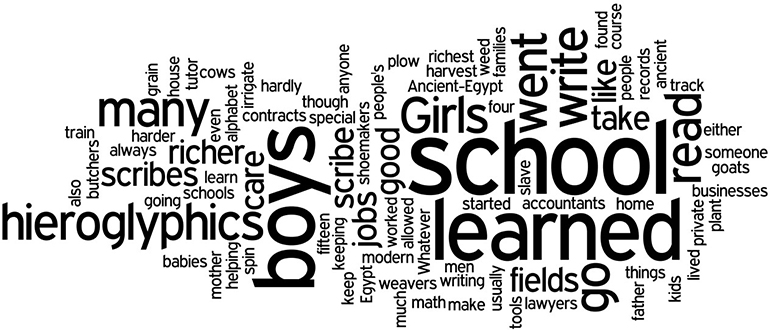What links the words in word clouds is not grammar, but relative salience, proximity, and composition. Looking at the example above, the relative salience of the words could tell us, perhaps, that boys are more important than girls, and schools more important than hieroglyphics. The proximity of the words to each other could tell us, perhaps, that there is some relation between scribes and hieroglyphics, and between mothers and babies.
Composition could tell us, perhaps, that hieroglyphics existed before school. We may even construct sentences, in broken English, “Girls went write school learned” or “Many scribes hieroglyphics”. But for the most part word clouds are precisely what the word ‘cloud’ suggests, passing shapes that we can read different things in, endlessly variable semantic fields that can be interpreted in many different ways which are nevertheless constrained by the words that are and are not included – in the example above we may have ‘school’ and ‘learned’, and we may have butchers, fathers, mothers, weavers, scribes, lawyers, and accountants, but we do not have teachers.
What word clouds do have is aesthetic value – compositional balance, typographic finesse, colour. In word clouds, once they are fixed, words become decorative, a setting for everyday practices that we need not be consciously aware of but that is yet always reassuringly there – on the wall of the lobby of an English Department, in the banner of the website of a forthcoming conference, on the cover of the annual report of a Library, to mention just a few I have seen recently.
“What do you see in the clouds, Charlie Brown?”
“Well, I was going to say I saw a duckie and a horsie, but I changed my mind”
(Charles, M. Schultz, The Complete Peanuts, vol 5)
